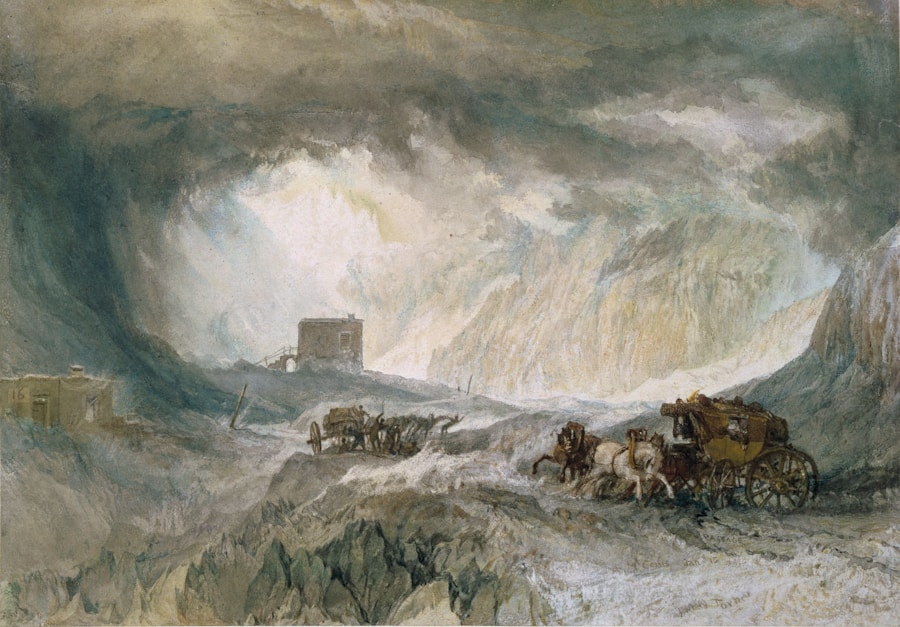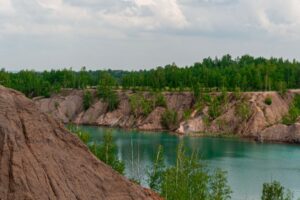Percy Bysshe Shelley’s “Ode to the West Wind” stands as a monumental piece within the canon of Romantic poetry, encapsulating the fervent spirit of change and the profound connection between humanity and nature. Written in 1819, during a period of personal turmoil and political upheaval in Europe, the poem reflects Shelley’s deep engagement with the natural world and his desire for transformation, both personally and socially. The West Wind, a central figure in the poem, serves as a powerful metaphor for the forces of nature that can inspire and invigorate, as well as destroy and reshape.
Shelley’s use of vivid imagery and passionate language invites readers to explore the complexities of existence, the interplay between destruction and creation, and the potential for renewal. The poem is structured as a series of five cantos, each rich with evocative language and layered meanings. Shelley employs a variety of poetic devices, including apostrophe, alliteration, and vivid imagery, to convey his themes.
The West Wind is not merely a meteorological phenomenon; it embodies the tumultuous spirit of change that permeates both nature and human life. As readers delve into the text, they encounter a landscape that is at once beautiful and terrifying, reflecting Shelley’s belief in the duality of existence.
Key Takeaways
- Shelley’s Ode to the West Wind is a powerful and evocative poem that explores the themes of nature, change, and renewal.
- The poem uses nature as a symbol of power, with the west wind representing the force of change and transformation.
- The west wind is depicted as a catalyst for renewal, bringing about both destruction and regeneration in the natural world.
- Shelley’s poem highlights the deep connection between nature and human emotions, using the changing seasons as a metaphor for the human experience.
- The influence of Romanticism is evident in Shelley’s Ode to the West Wind, with its emphasis on the beauty and power of nature, and the expression of intense emotion.
The Symbolism of Nature’s Power in the Poem
In “Ode to the West Wind,” nature emerges as a formidable force, symbolizing both destruction and regeneration. The West Wind itself is depicted as a “destroyer and preserver,” illustrating the duality inherent in natural processes. This duality is evident in the way Shelley describes the wind’s ability to scatter leaves and seeds alike.
The imagery of dead leaves being swept away by the wind signifies the end of one cycle, while simultaneously suggesting the potential for new growth. This interplay between death and rebirth is a recurring theme throughout the poem, emphasizing that nature’s power is not solely destructive but also essential for renewal. Shelley’s vivid descriptions of nature’s fury serve to heighten this symbolism.
He portrays the West Wind as a “wild spirit” that can unleash storms and chaos upon the earth. The opening lines evoke a sense of urgency and tumult, as the speaker implores the wind to “lift me as a wave, a leaf, a feather.” This plea underscores humanity’s desire to be swept up in nature’s transformative energy. The wind becomes an agent of change, capable of altering landscapes and lives alike.
Through this lens, Shelley invites readers to consider their own relationship with nature—how it can inspire creativity, provoke introspection, and ultimately lead to personal and societal transformation.
The West Wind as a Force of Change and Renewal

The West Wind serves as a powerful metaphor for change throughout Shelley’s ode. It embodies the idea that transformation is an inherent part of existence, reflecting both natural cycles and human experiences. In the poem, Shelley articulates his longing for renewal by aligning himself with the wind’s dynamic energy.
He expresses a desire to be carried away by its force, suggesting that he seeks liberation from his own constraints. This yearning for change resonates deeply with readers who may also feel trapped by societal norms or personal struggles. Moreover, the West Wind symbolizes the potential for revolutionary change in society.
Written during a time of political unrest in Europe, Shelley’s ode can be interpreted as a call for social upheaval. The wind’s ability to scatter seeds across the earth serves as a metaphor for spreading new ideas and fostering growth in a stagnant society. Shelley’s invocation of the wind as a “breath of autumn” suggests that just as autumn heralds change in nature, so too can it inspire change within humanity.
The Connection between Nature and Human Emotions
Shelley’s exploration of nature in “Ode to the West Wind” extends beyond mere symbolism; it delves into the profound connection between natural elements and human emotions. The poet articulates how the West Wind mirrors his own inner turmoil and aspirations. As he grapples with feelings of despair and longing for renewal, he finds solace in nature’s power.
The wind becomes a reflection of his emotional state—a force that can both uplift and devastate. This intimate relationship between nature and human experience is a hallmark of Romantic literature, where emotions are often intertwined with the natural world. The poem also suggests that nature has the capacity to evoke deep emotional responses in individuals.
Shelley’s vivid imagery elicits feelings of awe and reverence for the natural world. For instance, when he describes the wind as “the breath of Autumn’s being,” he captures not only the physical presence of the wind but also its emotional resonance. The changing seasons serve as a backdrop for human emotions—autumn represents decay but also hints at renewal through winter’s promise of spring.
This cyclical relationship between nature and emotion invites readers to reflect on their own experiences and how they are influenced by their surroundings.
The Influence of Romanticism on Shelley’s Ode to the West Wind
“Ode to the West Wind” is deeply rooted in the principles of Romanticism, a literary movement characterized by its emphasis on emotion, individualism, and a reverence for nature. Shelley embodies these ideals through his passionate language and exploration of profound themes. The Romantic poets sought to break free from the constraints of Enlightenment rationalism, embracing instead the complexities of human experience and emotion.
In this context, Shelley’s ode serves as an expression of his innermost thoughts and feelings, reflecting his desire for personal liberation and societal change. The influence of Romanticism is particularly evident in Shelley’s portrayal of nature as a living entity imbued with spirit and power. Unlike earlier literary traditions that often depicted nature as a backdrop for human action, Romantic poets like Shelley viewed it as an active participant in human affairs.
The West Wind is personified throughout the poem, embodying both chaos and creativity. This personification aligns with Romantic ideals that celebrate individuality and emotional depth. Furthermore, Shelley’s use of vivid imagery and sensory language evokes an emotional response from readers, drawing them into his vision of nature as both beautiful and terrifying.
The Legacy of Shelley’s Ode to the West Wind in Literature

Influence Across Generations
The poem’s impact extends far beyond its historical context, influencing countless writers and poets across generations. Its themes of transformation, renewal, and the interplay between nature and human emotion continue to resonate with readers today.
A Testament to Romantic Poetry
Writers such as Walt Whitman and John Keats have drawn upon Shelley’s exploration of nature’s power, incorporating similar motifs into their own works. Moreover, “Ode to the West Wind” has become emblematic of Romantic poetry itself—a testament to its enduring relevance in literary studies. Scholars often analyze its intricate structure, rich symbolism, and emotional depth as they explore broader themes within Romantic literature.
A Timeless Reflection of Humanity’s Relationship with Nature
The poem serves as a touchstone for discussions about humanity’s relationship with nature, prompting readers to consider their own place within this complex web of existence. As contemporary issues such as climate change continue to challenge our understanding of nature’s power, Shelley’s ode remains a poignant reminder of our interconnectedness with the world around us.
Shelley’s Ode to the West Wind beautifully captures the immense power and beauty of nature. This poem reminds me of an article I recently read about the rich natural beauty of Botany Bay. The article explores the diverse flora and fauna found in this stunning location, highlighting the awe-inspiring power of nature. To read more about the wonders of nature’s power, check out the article here.






















+ There are no comments
Add yours